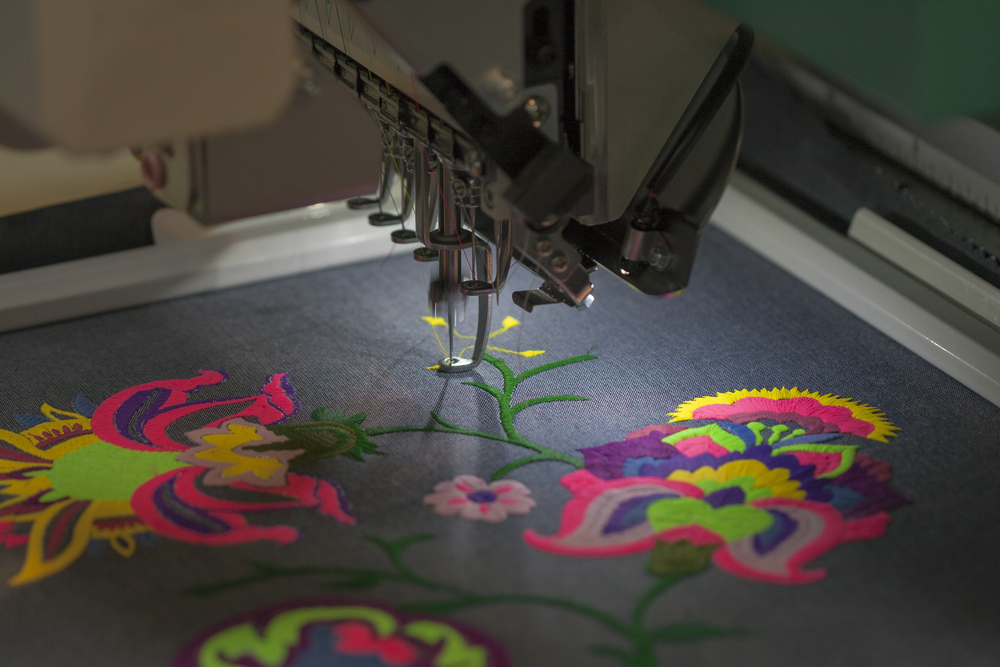Custom Digitizing for Embroidery: Customized to Your Demands
Wiki Article
Simplifying the Art of Needlework Digitizing: Step-by-Step Overview
As modern technology continues to advancement, the digitization procedure has come to be much more accessible, enabling enthusiasts to bring their intricate styles to life with convenience. In this guide, we will certainly unravel the intricacies of embroidery digitizing, breaking down each step systematically to streamline the process and encourage both beginners and experienced embroiderers alike.Understanding Embroidery Digitizing Software Program
Embroidery digitizing software works as an essential device for transforming elaborate layouts right into digital styles compatible with needlework machines, assisting in specific stitching and personalization. This customized software program enables customers to import various image data styles, such as JPG or PNG, and transform them right into needlework machine-readable formats like DST, EXP, or PES - Digitizing for Embroidery. By using attributes like stitch editing, underlay options, and thread color option, digitizing software program makes it possible for users to control every element of the style procedureIn addition, progressed needlework digitizing software program supplies devices for creating complex styles, changing stitch density, and integrating complex details. Users can also sneak peek the layout prior to sewing it out, making sure precision and lessening mistakes. Furthermore, numerous software program programs give automated attributes that assist improve the digitizing process, saving effort and time.
Recognizing the capacities of needlework digitizing software application is essential for achieving premium results in embroidery jobs. By mastering this tool, needlework lovers and experts can unleash their imagination and bring complex designs to life with precision and efficiency.

Selecting the Right Design File
After familiarizing yourself with the capabilities of needlework digitizing software application, the following vital action in the process is selecting the right layout documents for your task. Digitizing for Embroidery. When picking a style file for embroidery digitizing, it's necessary to take into consideration the complexity of the design, the dimension of the last product, and the sort of fabric you will certainly be dealing withFor intricate layouts with great details, a high-resolution photo or vector data is advised to make certain that the embroidery machine can properly replicate the design. In addition, the size of the end product plays a considerable role in choosing the best layout data. Larger styles may call for greater resolution data to keep clearness and sharpness.
Moreover, the kind of textile you will be embroidering on influences the selection of design data. Various textiles may need changes in the layout file to make sure that the stitches are correctly lined up and the layout looks like intended. By very carefully picking the right design data based upon these elements, you can set on your own up for an effective needlework digitizing procedure.
Digitizing Tools and Techniques
Utilizing specialized software application and accuracy strategies, digitizing devices are essential in transforming elaborate styles into embroidery-ready data. Embroidery digitizing software, such as Wilcom, Hatch, or Embrilliance, offers the essential platform to transform artwork into stitch information. These programs offer features like stitch modifying, rug choices, and lettering devices to make sure the design equates flawlessly onto fabric.One of the crucial strategies in digitizing is developing a clear course for the needlework device to comply with. This involves digitizing each element of the design with accuracy, figuring out stitch types, densities, and directions. By utilizing devices like digitizing tablet computers or software-specific plugins, embroiderers can accomplish a high level why not look here of accuracy in their digitized designs.
Furthermore, understanding the art of padding stitching is important for producing quality embroidery. Underlay stitching maintains the textile and produces a foundation for the layout, making certain that the end product is both visually attractive and long-lasting. By recognizing these digitizing devices and techniques, embroiderers can boost their craft and bring complex styles to life with accuracy and effectiveness.
Customizing Stitch Kinds and Directions
The option of stitch types can substantially influence the overall look and texture of the embroidered layout. By strategically integrating these stitch types, embroiderers can accomplish deepness and dimension in their styles.Furthermore, the direction of stitches plays an important duty in boosting the aesthetic allure of the last needlework. By trying out with various stitch angles and patterns, embroiderers can bring their styles to life with exceptional detail and complexity.
Screening and Refining Your Digitized Layout
To make sure the precision and high quality of your digitized style, thorough screening and improvement are necessary actions in the embroidery digitizing procedure. When you have actually completed the digitization of your design, it is important to test it prior to waging the actual needlework. Testing enables you Full Report to identify any type of potential issues such as thread breaks, stitch thickness problems, or layout distortions that might affect the final result.
After testing, it is essential to improve your digitized layout based on the feedback from the examination sew-out. This may involve tweaking sew settings, adjusting thickness, or making modifications to the overall design to attain the preferred result. By repeating with testing and improvement, you visit this site right here can tweak your digitized design to excellence prior to moving on with the real needlework process.
Verdict
To conclude, mastering the art of needlework digitizing needs a complete understanding of the software program, choosing the right layout data, utilizing digitizing devices and methods, customizing stitch kinds and directions, and screening and improving the digitized style. By complying with these steps, embroiderers can streamline the digitizing process and create high-quality embroidered styles with accuracy and efficiency.Report this wiki page